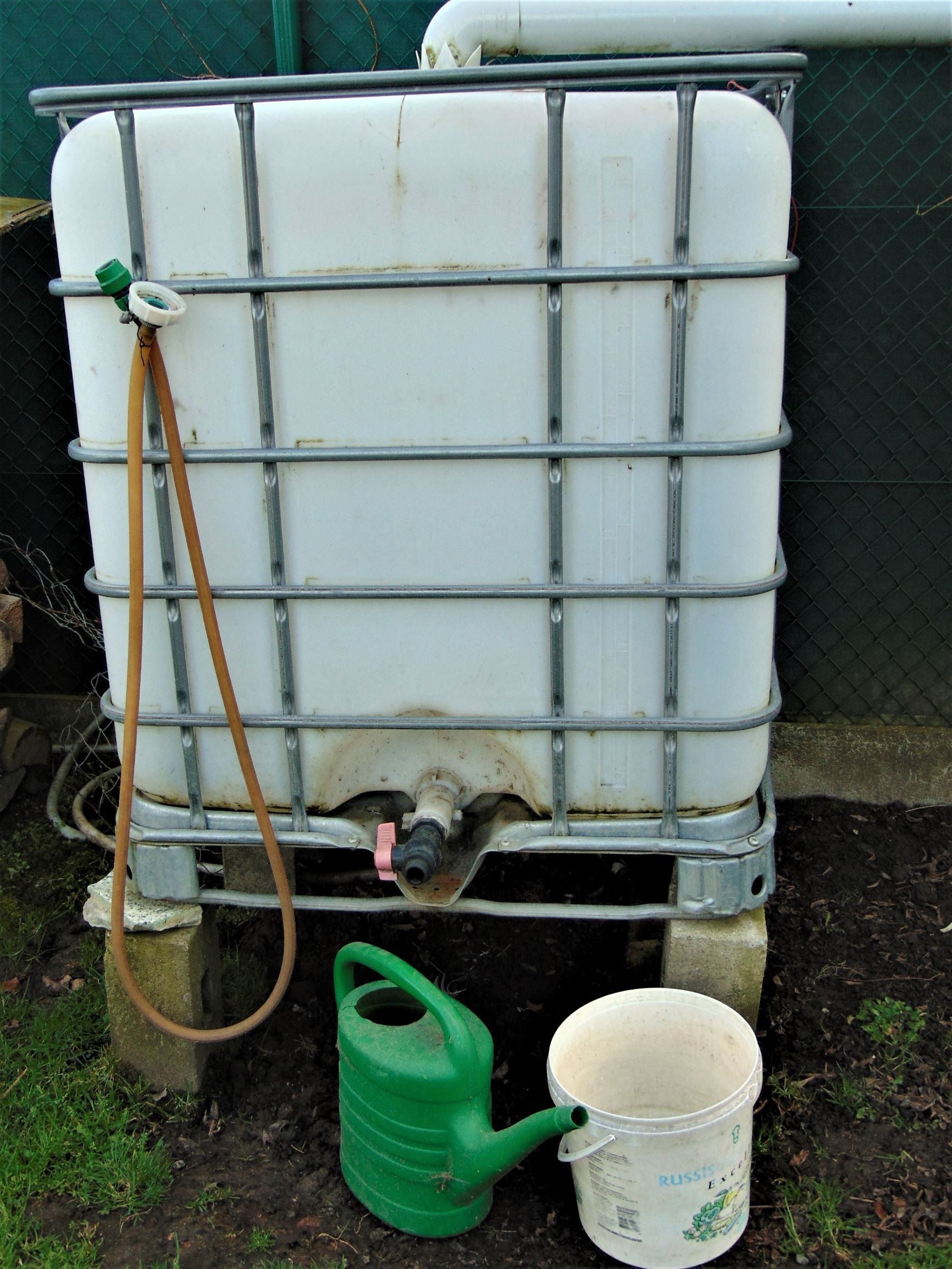Dry summer, dry garden ... Where do we recover some extra water?
Of course you ensure that you can collect rainwater. If it rarely or little rains, it is worthwhile to tighten extra sails in time (and temporarily) to collect the drops.
You can collect conveniently, especially through gutters at the roofs and through the drainpipes. There are several types of ready-made "collecting machines" in shops and DIY stores to collect rain through the pipe (sometimes called "rain thief"). You can also put together a system yourself. The overflow you lead to 1 or more tons. Subsequent tanks are then always slightly lower (in "cascade"), and are automatically filled via an overflow when the previous one is full.
You can provide filters on the supply line, for example, first a leaf trap made of chicken wire, (a settling hole or tray) a little further a screen made of fly gauze (or glass curtain), and end with a nylon stocking.
Make sure the barrels are high enough to make a tap at the bottom where a watering can or bucket fits, or to which you attach a garden hose (for short distances). Empty the barrels before freezing so that they do not burst due to the expanding ice. In soft frost you can compensate for this by placing soft floats on the water (wood, an empty watertight box, ..)
Cover all openings so that no mosquitoes can enter. Otherwise it becomes a culture pool. Ward off as much sun and light as possible, to limit algae growth.
 The pallet-sized IBC tanks (Intermediate Bulk Containers, patented in 1992) are very handy for storing rainwater. If at least your supplier is reliable with regard to the (chemical composition of the) content. They are used in the industry for the storage and transport of liquids and are easily stackable, reusable and portable (with forklift or pallet).
The pallet-sized IBC tanks (Intermediate Bulk Containers, patented in 1992) are very handy for storing rainwater. If at least your supplier is reliable with regard to the (chemical composition of the) content. They are used in the industry for the storage and transport of liquids and are easily stackable, reusable and portable (with forklift or pallet).
Rainwater collection is compulsory for more recent homes. Usually a pump is provided to use this gray water for toilet, washing machine, etc.
You can lay terraces on slopes. You then get flat parts to grow crops, and the rainwater that flows out is also delayed and collected. Contour plowing is also an option.
If there are sometimes heavy showers it is worthwhile to provide a collecting basin or pond at lower points (and of course make it as waterproof as possible). Provide shade around it, plant willows. If necessary, grow duckweed.
You can of course also dig or drill a well. Or where necessary, pump up surface water (pond, ditch, river ...).
Water that you can recover:
Kitchen: washing and rinsing water (from products without sprayed products). Allow the boiling wet to cool.
Washing machine: the washing water (with little bio-soap) and the rinsing water
Cleaning, window cleaning: ditto, you can collect or absorb water with a sponge or mop.
Bathroom: water with little organic soap can be used
Pee in a jug or bottle (with large opening) so that you can dilute the urine before use, or directly in the garden (but not always in the same places). Save a lot of water by using a compost toilet.
Also keep the soil between the crops covered with mulch or vegetation. This provides shade during the day and dew and condensation in the morning. The little water you have is of course distributed very economical, for example with an olla pot.
With severe and prolonged droughts you can start thinking about mist traps or dew screens as they are used in the Andes, or about condensation traps (type Waterboxx).
